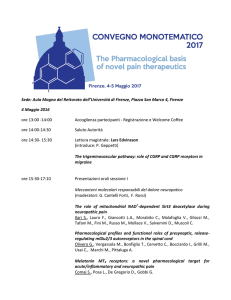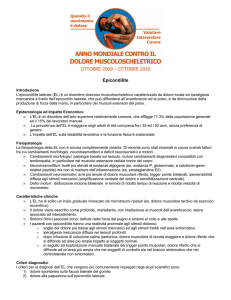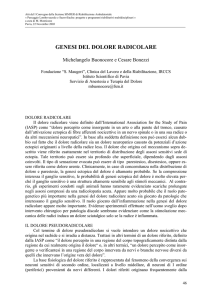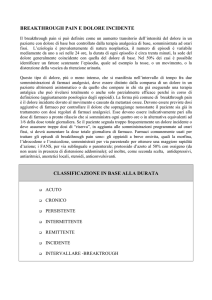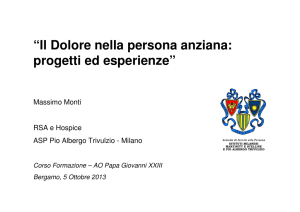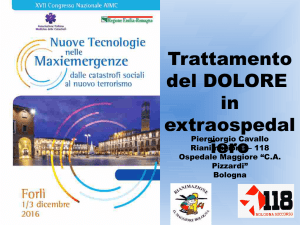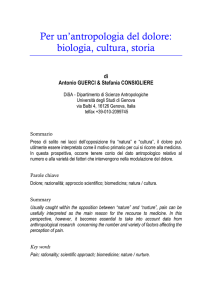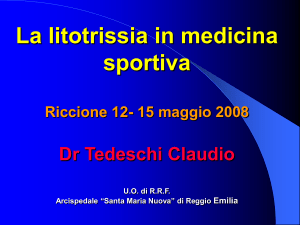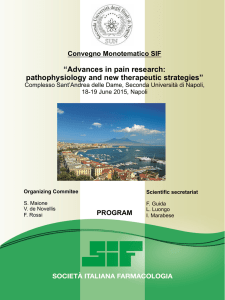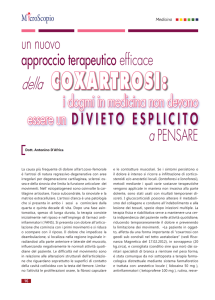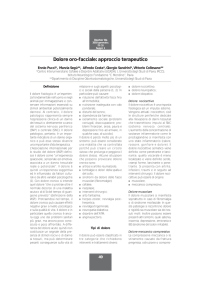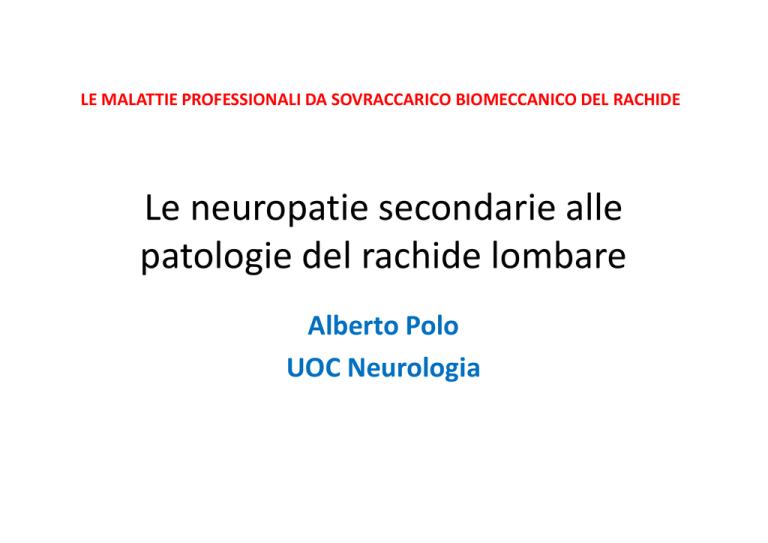
LE MALATTIE PROFESSIONALI DA SOVRACCARICO BIOMECCANICO DEL RACHIDE
Le neuropatie secondarie alle
patologie del rachide lombare
Alberto Polo
UOC Neurologia
Morfologia del canale vertebrale
L4
L5
S1
Anatomia macroscopica locale
Nucleo polposo
Corpo vertebrale
Ligamento long post
nervo seno-vertebrale di Luschka
peduncoli
Disco
Lamine
radice
vasi
Forame di coniugazione
Faccette articolari
Processo trasverso
Processo spinoso
porzione periferica dell’anello fibroso, al legamento
longitudinale posteriore, al periostio che ricopre i corpi
vertebrali e le strutture ossee dell’arco posteriore della
vertebra, alle formazioni capsulo-legamentose delle
articolazioni posteriori
GANGLIO SPINALE
Scheletro
Articolazioni
Legamenti
Disco intervertebrale
Radice nervosa
Vasi
ANATOMIA CLINICA
NERVO
FEMORALE
NERVO
OTTURATORIO
RAMI
MUSCOLARI
ESAME OBIETTIVO
Manovra di WASSERMANN
Manovra di LASEGUE
RIFLESSI O.T. : patellare (L4) ed achilleo (S1)
DOLORE
ACUTO
SUB ACUTO
CRONICO
LOCALE
IRRADIATO
POSTURALE
A RIPOSO
IN MOVIMENTO
Peripheral pain
Peripheral neuropathic pain results from lesions to the peripheral
nervous system (PNS) caused by mechanical trauma, metabolic
diseases, neurotoxic chemicals, infection, or tumor invasion and
involves multiple pathophysiological changes both within the PNS
and in the CNS
Neuropathic pain is triggered by lesions to the somatosensory nervous
system that alter its structure and function so that pain occurs
spontaneously and responses to noxious and innocuous stimuli are
pathologically amplified. The pain is an expression of maladaptive
plasticity within the nociceptive system, a series of changes that
constitute a neural disease state.
Although neural lesions are necessary, they are not sufficient to
generate neuropathic pain; genetic polymorphisms, gender, and age all
influence the risk of developing persistent pain.
LOW BACK PAIN
Worldwide, 37% of LBP was attributed
to occupation, with twofold variation
across regions. The attributable
proportion was higher for men than
women, because of higher participation
in the labor force and in occupations with
heavy lifting or whole-body vibration.
Work-related low-back pain alone results in approximately 800,000
disability-adjusted life-years annually
5000000 x 10 = 50 000 000
137000 DALYs
$8.15 billion (1012 ) in lost productivity (certificated and
non-certificated costs included) was estimated for one
year in Australia alone.
1 000 000
1 000 000 000
1 000 000 000 000
Int J Spine Surg. 2013
Backing up the stories: The psychological and social costs
of chronic low-back pain.
Mathew J1, Singh SB1, Garis S2, Diwan AD2.
One DALY
represents the loss of one year in full health.
DALYs are the sum of the
Years Lost due to Disability
(YLD)
and the Years of Life Lost
(YLL) due to premature
mortality
Disability-Adjusted
Life Years (DALYs)
Quando la neurofisiologia?
Clinica dubbia
Evoluzione
Fisiopatologia
Correlazione imaging
Prognosi
EMG / anno
EMG AD AGO
ATTIVITA’ SPONTANEA:
FIBRILLAZIONE- S.W.
RECLUTAMENTO
NORMALE
NEUROGENO
Dolore lombare irradiato alla faccia anteriore del ginocchio dx : esordio due mesi fa
con dolore continuo inizialmente alla schiena e dopo 3-4 gg si irradia; e blocco
funzionale. Carrellista. Attualmente il dolore è solo posturale. Ipoestesia alla faccia
anteriore della coscia e terzo laterale della gamba dx. ROT simmetrici.
ED espulsa.
Trasportatore. Alcuni mesi, episodio di lombosciatalgia
irradiata alla faccia laterale della gamba sx; tuttora presente
dolore accentuato dalla posizione seduta e modesto deficit
della dorsiflessione del piede.
•
Non eccitabile il potenziale del n peroneo (m EBD) con normale risposta del n peroneo
superficiale a sx. Si confermano sostanzialmente invariati, i segni di sofferenza neurogena
periferica prevalentemente cronicizzati nei territori L5S1 a sinistra, a prevalente estrinsecazione
peroneale
Lombosciatlgia sx

